Write The Perfect Artist Bio
Whether it’s a cover letter, a grant application or even a dating profile, nobody likes writing about themselves – Bluethumb artists’ profiles are no exception. For many people, it’s tempting to simply skip over the bio section or, at most, jot down a few basic details and call it a day.
Like it or not however, that little strip of writing is extremely important to help your art sales along. Buying an artwork is an act of love, and people appreciate the chance to hear from the artist who created that piece they simply have to have. It’s an important detail, so here’s a few tips that might make things easier.
Copy and Paste
That’s right – you heard it here first. As an artist, you never know what opportunities are going to come knocking, so it’s a good idea to have a bio on standby and ready to go. Rather than going through your achievements, ideas and career trajectory over and over again, set aside a few hours and write something you’ll be happy to use ten times, if you need to. Of course, you’ll need to update this document as you go, in the same way that you would update your resume. However, after laying some solid foundations, the rest of the work should be easy.
Prompt Yourself
Sometimes it can be easier to respond to questions instead of pulling phrases from the air… We’ve listed a few ideas to get you started below. Prompting yourself with questions can also be a useful technique when writing artwork descriptions – for example, ‘Why did I decide to paint this subject?’, ‘What do I hope that the viewer will take away from it?’, or ‘What was the creative process of making that piece?’. You get the idea!
Find your Voice
It might be easier said than done, but try to aim for professionalism and personality in your writing so that you can grab readers’ attention and keep it – your bio is part of the way you present yourself online, and just like in a job interview, first impressions matter.
You might opt for a cool, collected third person (“Matilda Jenkins is a Melbourne-based artist who has been creating resin art for the last five years…”). Or you could engage with the reader on a more personal level by using the first-person voice (“Hi there, thanks for taking a look at my profile. I’ve been making resin art full-time ever since moving to Melbourne five years ago…”. There are many different ways to write – find what works for you!
Break it Down
Concisely summarising your whole career and approach to making art within a few short paragraphs is no mean feat, but it becomes a lot easier if you follow a logical structure. Think of your artist bio like a triangle – start broadly, with the general facts about yourself at the bottom, and then move into the finer details, such as your creative process or what inspires you, towards the top. Three paragraphs of about 40-60 words is a good guideline, but a little longer is fine too.
A Fresh Pair of Eyes
No matter how good of a writer you are, it’s always a good idea to have someone else look at your work. Another person might spot some clumsy wording or a grammar mistake, or they might even remember something great about your work that you’ve forgotten to include. Along the same lines, it’s also a good idea to leave your bio for a couple of days and then come back to it, as you’ll probably read what you wrote quite differently, and more objectively, once you’ve gained some distance.
See what other people are writing
If you’re still unsure, then have a look around Bluethumb and see what everyone else is writing – making sure, of course, that you use it as inspiration rather than writing a carbon copy. A few examples of great artist bios are George Hall, Kim Leutwyler, Katerina Apale and Selva Veeriah.

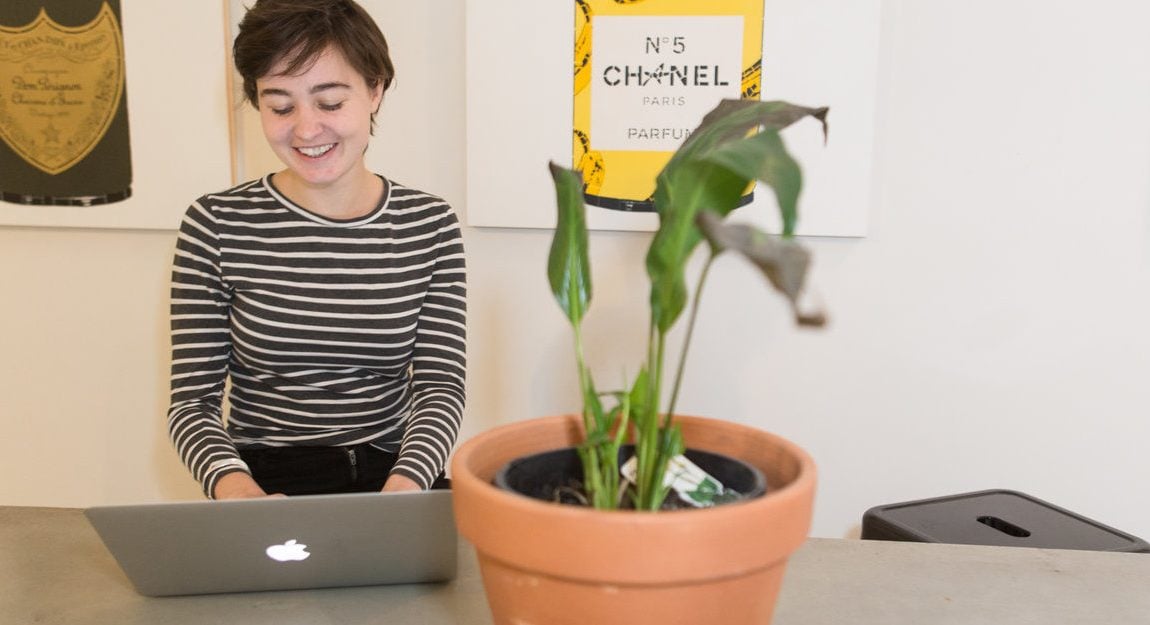
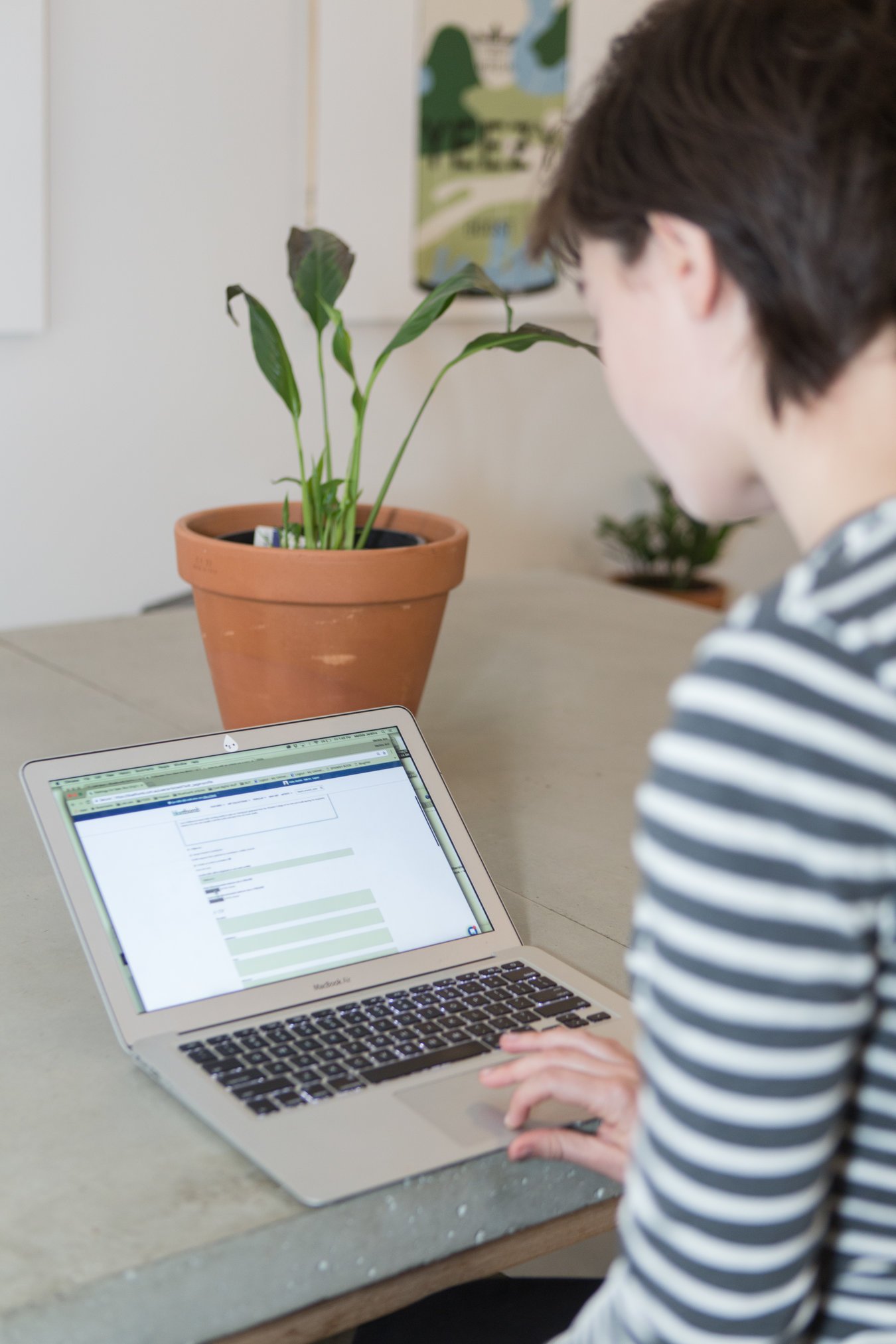
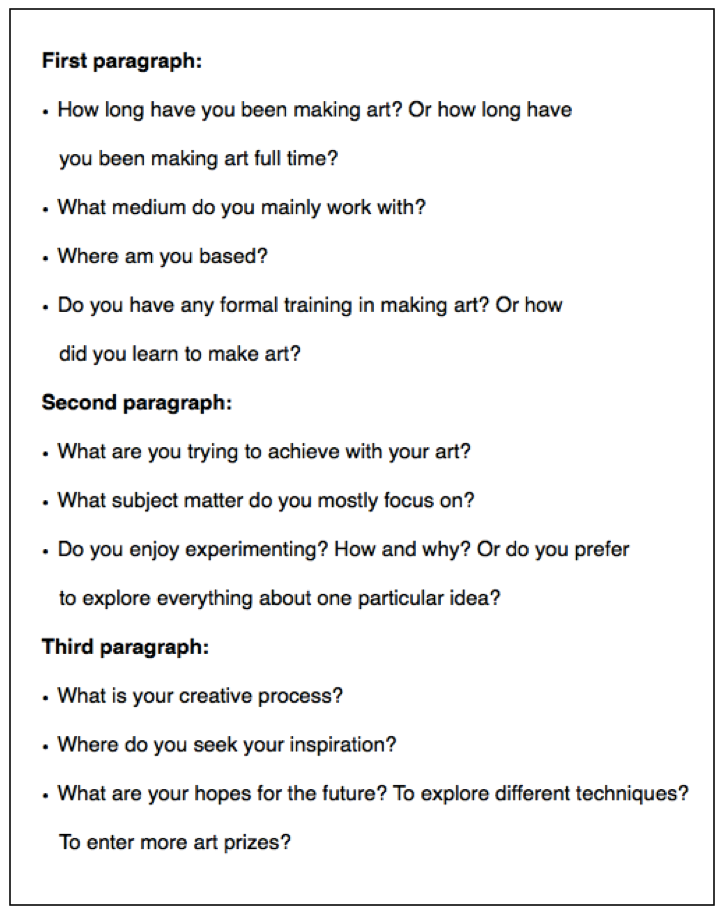
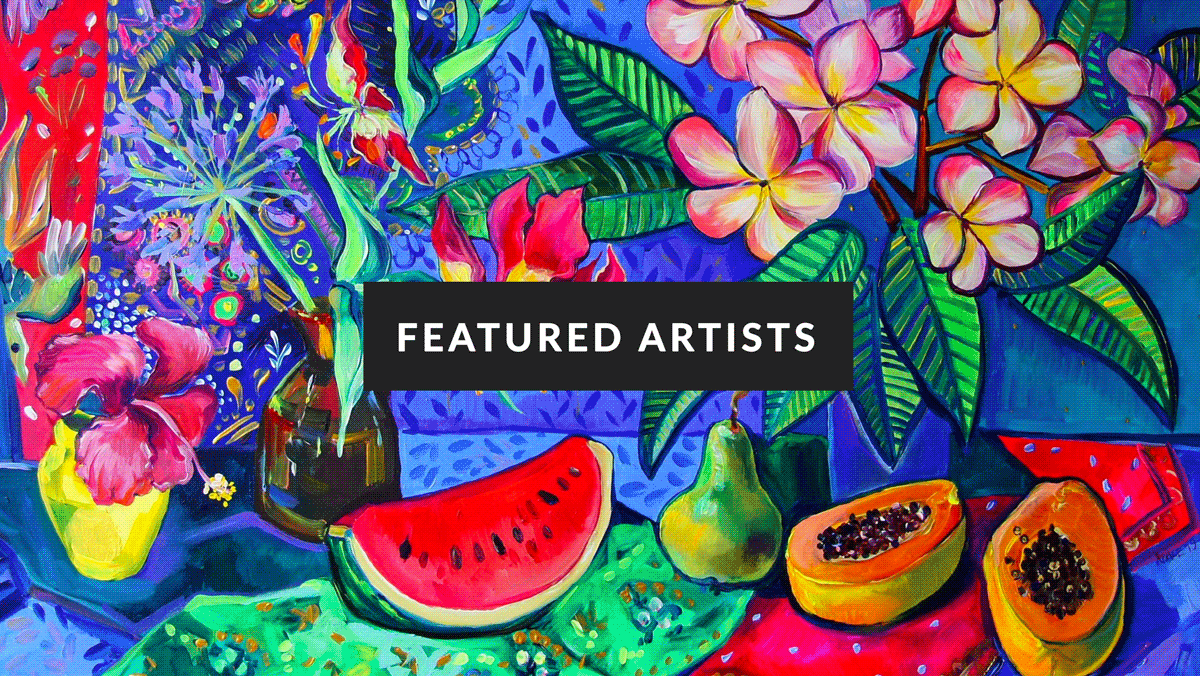
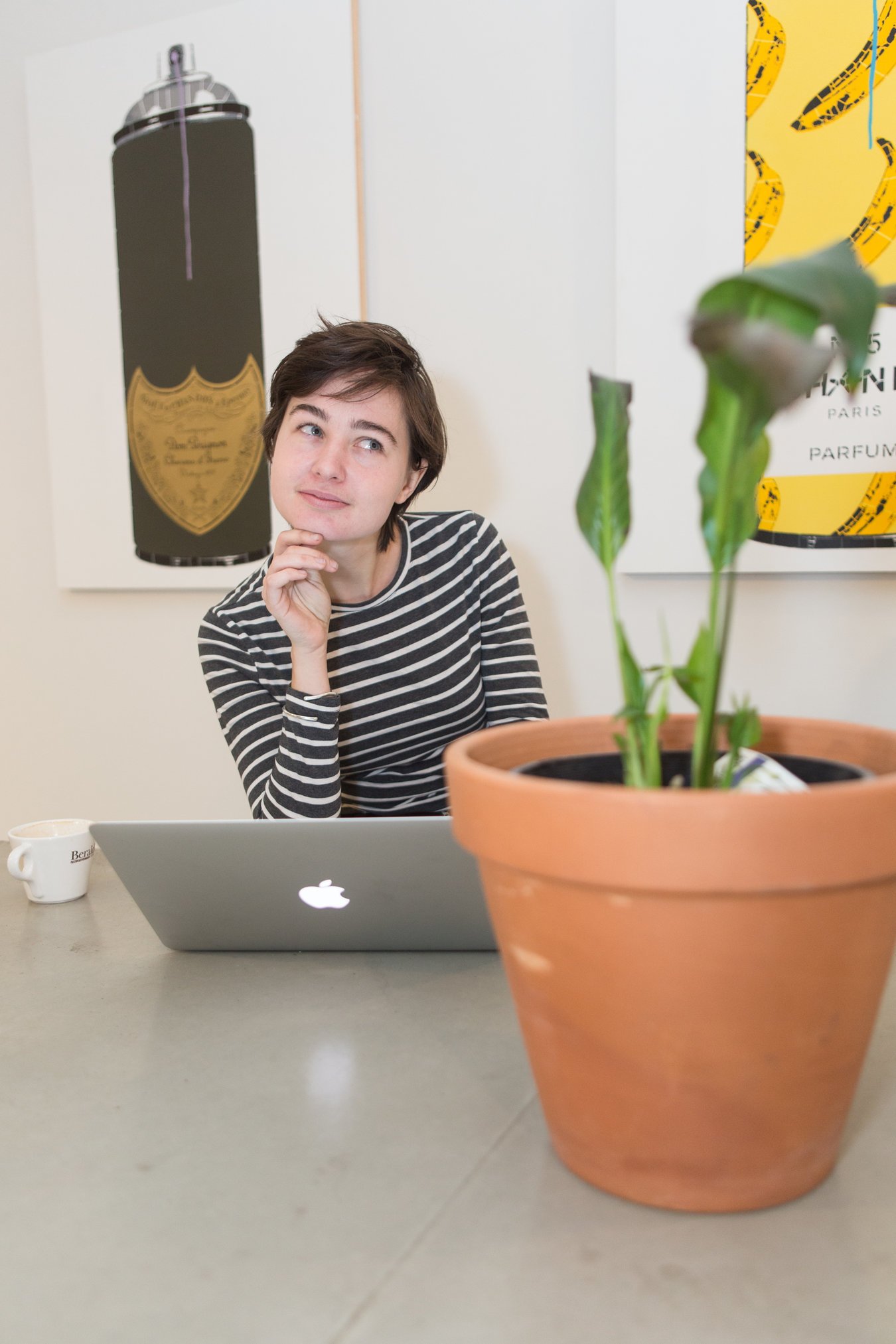
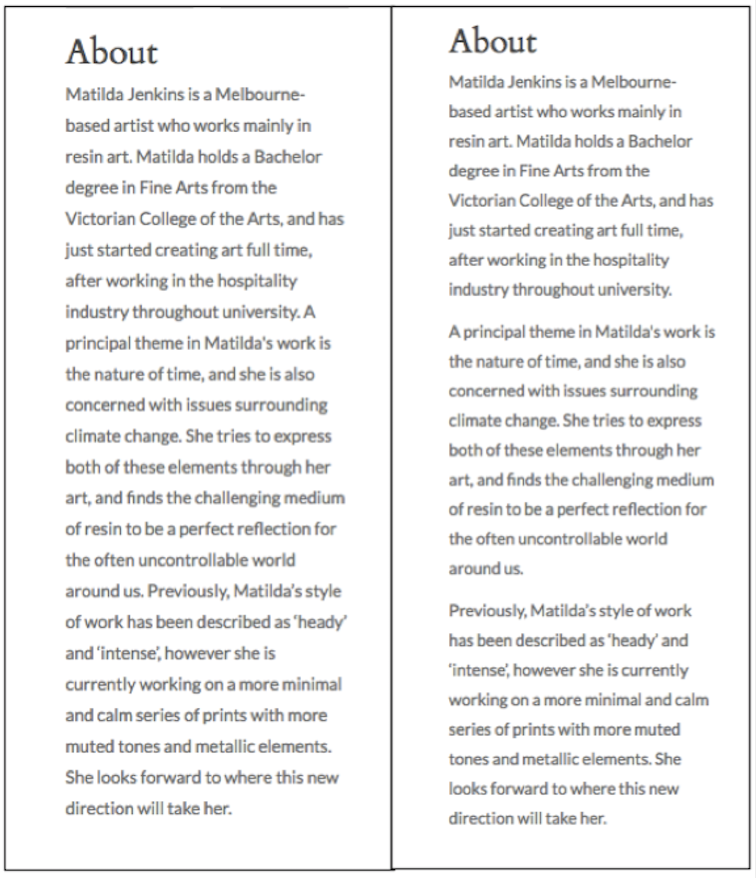
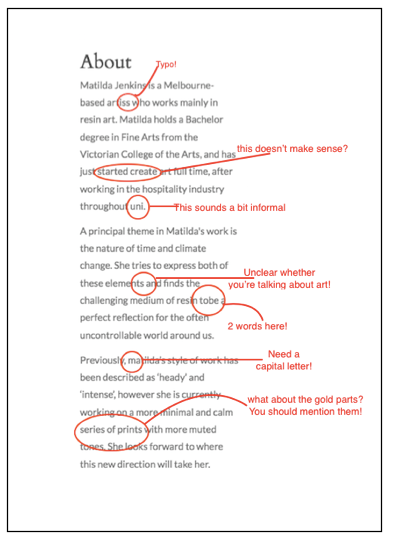

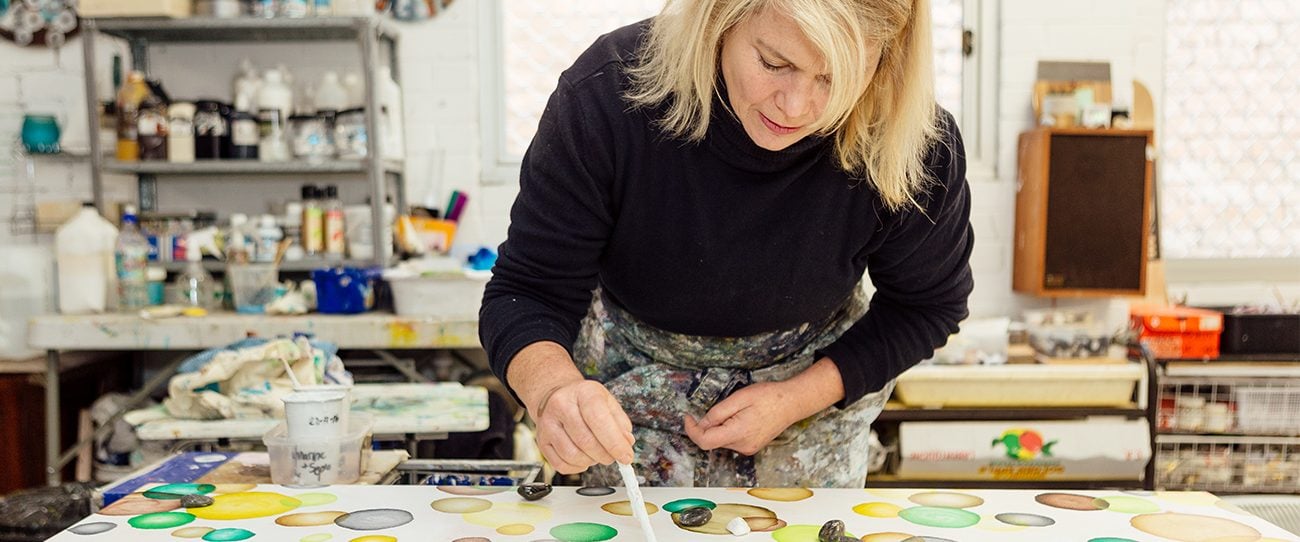
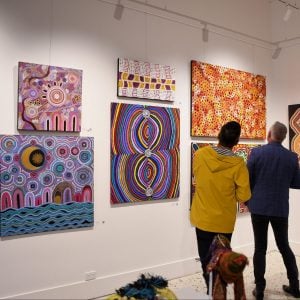
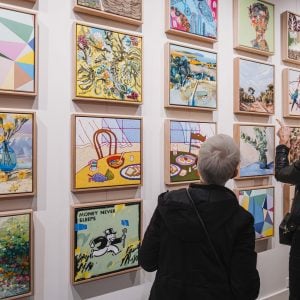
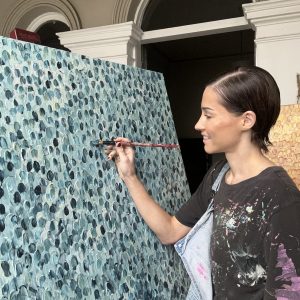
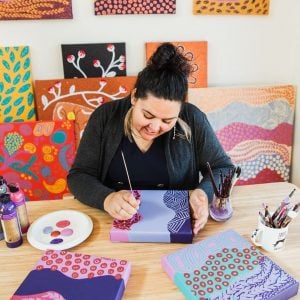
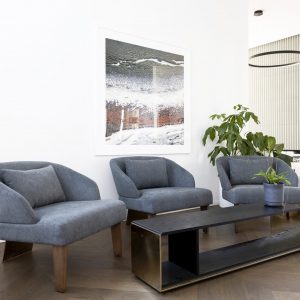
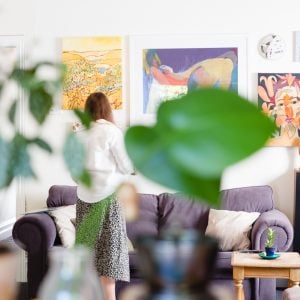






Hello,
Being a self-taught artist, I feel it difficult to write about me. Also that English is not my mother tongue. But after taking a brief look at the material provided here, i feel a bit more cofident about writing a self introduction. I will say that again, the website is really helpful in this regard.
Thanks to you
Having read the comment above by Shehzad Kausar; Should a self taught artist feel intimidated about writing his/her “Bio” ? I too am self taught. But have been painting and drawing over many many years. Because I am self taught, I know I am not stereotyped by inground teaching. However, I do have a mental battle without qualifications to crow about or to help advertise my work. I respect artists’ qualifications. Bluethumb, should I feel handicapped by not having any? Beverley R. Stowe
Hi Beverly,
You should never feel handicapped for not having particular qualifications. Qualifications are a personal choice for the artist and having many years of experience teaches you much about art as well! 🙂
Your team at Bluethumb
I have painted and drawn all my life and along the way picked up a BA degree melbourne uni and diploma painting sculpture and drawing from Caulfield institute back in the time . But guess what in later years I took up music singing playing guitar and writing songs without ever having one lesson. So there you go in some ways it gives me the freedom I didn’t feel so much in art. Best wishes Klaas
Hello,
Being a self-taught artist, I feel it difficult to write about me. Also that English is not my mother tongue. But after taking a brief look at the material provided here, i feel a bit more cofident about writing a self introduction. I will say that again, the website is really helpful in this regard.
Thanks to you
How do I start
I appreciate your advice.
I have painted all my life,exhibited for 30 years, won many awards and had numerous exhibitions.
The Matilda Jenkins article is really helpful. I particularly like that it recognises that writing the bio is” no mean feat”. With that in mind we are pointed to what is required (even caffeine) and given lots of practial tips.
As a fairly aged artist I have attempted to write simple bios and statements many times . With this guidance I’m motivated to try again.
One aspect I find difficult is that I have points about my bio which I think are important but I don’t know what others will think. To me memories of myself as a boy in short pants chasing dragonflies, reading about Gauguin when I was 13 , really feeling that Australia was part of Asia(Australasia ) are almost as important as later studies gaining degrees and learning special skills.
Thank you for the post
I’m 77 years old I have loved Art all my life but only painted occasionally until 1995 when I started painting and drawing all the time and did night courses at Centralian College in Alice Springs and did some classes at Tafe I love colour and enjoy using it when painting
A very interesting article to a very interesting situation – artist’s bio. It is never an easy subject but I prefer the less formal introduction as art is all about the freedom of expression. Talk about yourself and your creativity in creating your artworks. It’s not easy sometimes, but it is true and it is about the artist, their artwork, their art journey and their achievements. Thank you for a great article.
Hi, Matilde,
I am Linia, it’s my first time ever to share my artworks and to use bluethumb website. I am a little bit lost. Luckily, bluethumb website has awesome guides to help me. I found your article is very informative and helpful. Thank you for your article.